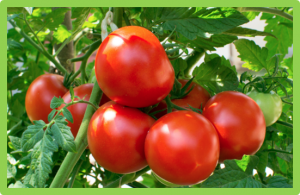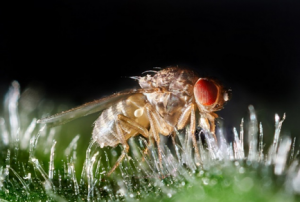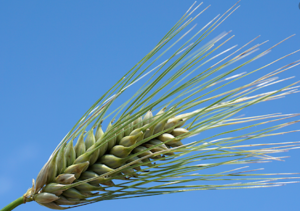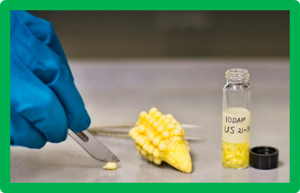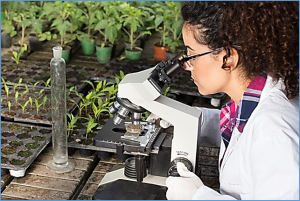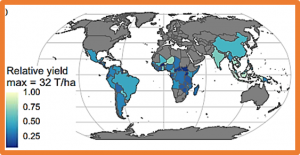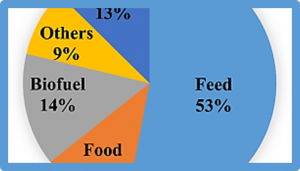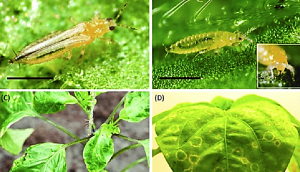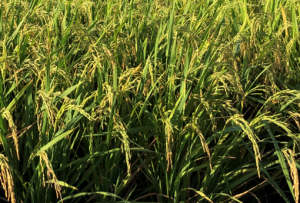Fruit taste is determined by sugars, acids and in some species, bitter chemicals. Attraction of seed-dispersing organisms in nature and breeding for consumer preferences requires reduced fruit bitterness. A key metabolic shift during ripening prevents tomato fruit bitterness by eliminating α-tomatine, a renowned defence-associated Solanum alkaloid. Here, we combined fine mapping with information from 150 resequenced genomes and genotyping a 650-tomato core collection
Here, we enabled endogenous CRISPR/Cas9 and CRISPR/Cas12a activity during spermatogenesis of the Mediterranean fruit fly Ceratitis capitata, a worldwide agricultural pest of extensive economic significance. In the absence of a chromosome-level assembly, we analysed long- and short-read genome sequencing data from males and females to identify two clusters of abundant and X-chromosome-specific sequence repeats
This study aimed at quantifying breeding progress achieved in resistance breeding towards varieties with higher yield and lower susceptibility for 6 major diseases, as well as estimating decreasing yields and increasing disease susceptibility of varieties due to ageing effects during the period 1983–2019. A further aim was the prediction of disease-related yield reductions during 2005–2019 by mixed linear regression models using disease severity scores as covariates.
Maize (Zea mays L.) Ufo1-1 is a spontaneous dominant mutation of the unstable factor for orange1 (ufo1). We recently cloned ufo1, which is a Poaceae specific gene expressed solely during seed development in maize. Here we have characterized Ufo1-1 and a loss-of-function Ds insertion allele (ufo1-Dsg) to decipher the role of ufo1 in maize. We found that both ufo1 mutant alleles impact sugars and hormones, and have defects in the basal endosperm transfer layer (BETL) and adjacent cell types.
Gene editing technologies such as transcription activator-like effector nucleases (TALENs) and clustered regularly interspaced short palindromic repeats (CRISPR)/CRISPR-associated 9 (Cas9) systems have been developed to create targeted DNA mutagenesis in many crop plants. This report describes application of the TALEN system to generate bialaphos resistance (bar)-knockout null segregants in herbicide-tolerant rice (Ba15) and microarray analysis on transcriptome changes of mutated lines, to identify unexpected effects resulting from off-targets.
We demystify recent advances in genome assemblies for the heterozygous staple crop cassava (Manihot esculenta), and highlight key cassava genomic resources. Cassava, Manihot esculenta Crantz, is a crop of societal and agricultural importance in tropical regions around the world. Genomics provides a platform for accelerated improvement of cassava's nutritional and agronomic traits, as well as for illuminating aspects of cassava's history including its path towards domestication.
Maize (Zea mays L.) is a highly versatile crop with huge demand of nitrogen (N) for its growth and development. N is the most essential macronutrient for crop production. Despite being the highest abundant element in the atmosphere (~ 78%), it is scarcely available for plant growth. To fulfil the N demand, commercial agriculture is largely dependent on synthetic fertilizers. Excessive dependence on inorganic fertilizers has created extensive ecological as well as economic problems worldwide
Cassava (Manihot esculenta Crantz) is a major staple root crop of the tropics, originating from the Amazonian region. In this study, 3354 cassava landraces and modern breeding lines from the Embrapa Cassava Germplasm Bank (CGB) were characterized. All individuals were subjected to genotyping-by-sequencing (GBS), identifying 27,045 single-nucleotide polymorphisms (SNPs). Identity-by-state and population structure analyses revealed a unique set of 1536 individuals and 10 distinct genetic groups with heterogeneous linkage disequilibrium (LD).
Resistance to thrips is an important trait for pepper growers. These insects can cause extensive damage to fruits, flowers and leaves on field and greenhouse grown plants worldwide. Two independent studies in Capsicum identified diterpene glycosides as metabolites that are correlated with thrips resistance. In this study, we fine-mapped a previously defined thrips resistance QTL on chromosome 6, to a region of 0.4 Mbp harbouring 15 genes. Two of these 15 candidate genes showed differences in gene expression upon thrips induction, when comparing plants carrying the resistance allele in homozygous state to plants with the susceptibility allele in homozygous state for the QTL region.
Rice cultivars from japonica and indica lineage possess differential resistance against blast fungus as a result of genetic divergence. Whether different rice cultivars also show distinct metabolomic changes in response to P. oryzae, and their role in host resistance, are poorly understood. Here, we examine the responses of six different rice cultivars from japonica and indica lineage challenged with P. oryzae. Both susceptible and resistant rice cultivars expressed several metabolites exclusively during P. oryzae infection, including the saponin Bayogenin 3-O-cellobioside. Bayogenin 3-O-cellobioside level in infected rice directly correlated with their resistant attributes. These findings reveal, for the first time to our knowledge that besides oat, other grass plants including rice produces protective saponins.


 Curently online :
Curently online :
 Total visitors :
Total visitors :
